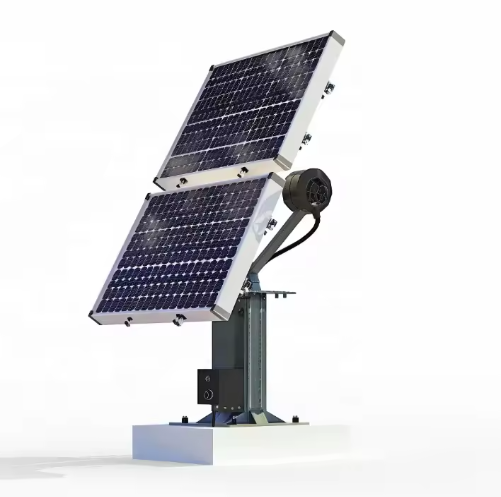Unlocking "Green" Budgets: How Our Mobile Solar Systems Help You Qualify for ESG Grants and Tax Credits?
by
Unlocking "Green" Budgets: How Our Mobile Solar Systems Help You Qualify for ESG Grants and Tax Credits?
Remote operations stuck paying diesel’s hidden costs? Discover how mobile solar unlocks ESG funding while eliminating fuel headaches.
Mobile solar systems qualify for ESG grants and tax credits by providing clean, off-grid power, reducing carbon footprints[^1], and meeting sustainability criteria—directly lowering operational costs.
Transitioning from diesel generators to mobile solar isn’t just an environmental choice—it’s a financial strategy. Here’s how you can tap into green funding while boosting operational efficiency.
The Hidden Tax of Diesel: Calculating the True Cost of Fuel Logistics, Maintenance, and Noise Complaints.
Ever feel like diesel costs are a black hole swallowing your budget? You’re not alone.
Beyond fuel prices, diesel generators incur hidden costs from logistics, maintenance, and community complaints—adding 30-50% to operational expenses and complicating remote deployments.
Breaking Down Diesel’s True Expense
Many operators only see the surface costs—fuel prices and rental fees. But the real expenses run deeper. Diesel logistics in remote areas require dedicated transport, storage, and frequent refueling runs, often requiring off-road vehicles or even helicopters. Maintenance isn’t just periodic; it’s constant—filter changes, engine repairs, and emissions compliance add up quickly. Then there are the intangibles: noise complaints from local communities or wildlife disturbances that can delay projects or even lead to fines.
Here’s a structured breakdown:
| Cost Category | Typical Expenses | Impact |
|---|---|---|
| Fuel Logistics | Transport, storage, spill management | High; increases with remoteness |
| Maintenance | Filters, parts, labor, downtime | Recurring; averages 15-20% of fuel cost |
| Operational Risks | Noise complaints, regulatory fines | Variable; can halt projects |
Switching to mobile solar directly addresses these pain points. Without fuel needs, logistics simplify. With fewer moving parts, maintenance drops dramatically. And silent operation keeps communities and regulators happy.
Diesel generators have higher hidden costs than solar.
True – Logistics, maintenance, and community issues add 30-50% to diesel expenses.
Noise complaints are a minor concern for diesel generators.
False – Noise can lead to project delays, fines, and community pushback.
The $5,000 Mistake: Why Cheap Mobile Trackers Fail in the First Year (And the 3 Critical Components to Check).
Tempted by that budget solar tracker? Prepare for premature failure and wasted investment.
Cheap mobile solar trackers[^2] often fail due to poor structural integrity, weak motors, and inadequate weatherproofing—leading to breakdowns within months, not years.
Why Low-Cost Trackers Don’t Last
Not all solar trackers are created equal. The allure of a low upfront cost hides critical flaws: undersized motors that strain under wind load, lightweight frames that bend or corrode, and seals that fail under rain or dust. These components might look similar on paper, but in the field, the difference is stark.
Focus on these three areas when evaluating trackers:
- Structural Frame: Look for high-grade, corrosion-resistant steel or aluminum. Thin materials warp under stress.
- Drive System: Ensure motors are rated for continuous operation and high torque. Cheap gearboxes strip easily.
- Weather Sealing: IP65 rating or higher is essential. Dust and water ingress are primary failure points.
Investing in robust engineering upfront avoids costly replacements and ensures reliable sun-following efficiency—key for maximizing energy output and ROI.
Solar tracker motors are a common failure point in cheap models.
True – Low-torque motors burn out quickly under real-world conditions.
Weatherproofing is only necessary for rainy climates.
False – Dust, humidity, and temperature swings degrade components everywhere.
Powering the Impossible Location: A Guide for Telecom, Remote Research, and Disaster Relief Operations.
Need reliable power where grid and diesel fail? Solar mobility is the game-changer.
Mobile solar systems provide critical, resilient power for telecom towers, research camps, and disaster zones—enabling operations in locations where traditional power is unreliable or unavailable.
Where Mobile Solar Becomes Essential
Certain operations can’t afford power failures. Telecom infrastructure in rural areas, scientific research in Arctic or desert regions, and emergency response in disaster-hit zones all share a common need: dependable electricity without constant refueling. Mobile solar systems deliver exactly that—deployable in hours, silent, and emission-free.
Consider these applications:
- Telecom: 5G expansion often requires towers far from the grid. Solar ensures uptime without diesel shipments.
- Research: Field studies in sensitive ecosystems can’t risk fuel spills or generator noise disturbing experiments.
- Disaster Relief: Rapid deployment of power for medical equipment, comms, and lighting when infrastructure is down.
With robust battery storage[^3] and intelligent energy management, these systems operate autonomously for days, even in low-light conditions. They’re not just an alternative; they’re the only feasible solution for many "impossible" locations.
Mobile solar is only suitable for sunny climates.
False – Modern systems with battery storage work reliably in varied weather and seasons.
Disaster relief operations rarely use solar power due to slow deployment.
False – Mobile solar units can be set up faster than diesel generators in many scenarios.
Conclusion
Mobile solar cuts costs, ensures reliability, and unlocks green funding—making it the smart choice for forward-thinking remote operations.
[^1]: Find strategies and resources to help your business minimize its environmental impact.
[^2]: Get insights on selecting high-quality mobile solar trackers to avoid costly failures.
[^3]: Understand the significance of battery storage in maximizing solar energy efficiency.
Popular Posts
You may also be interested in:




